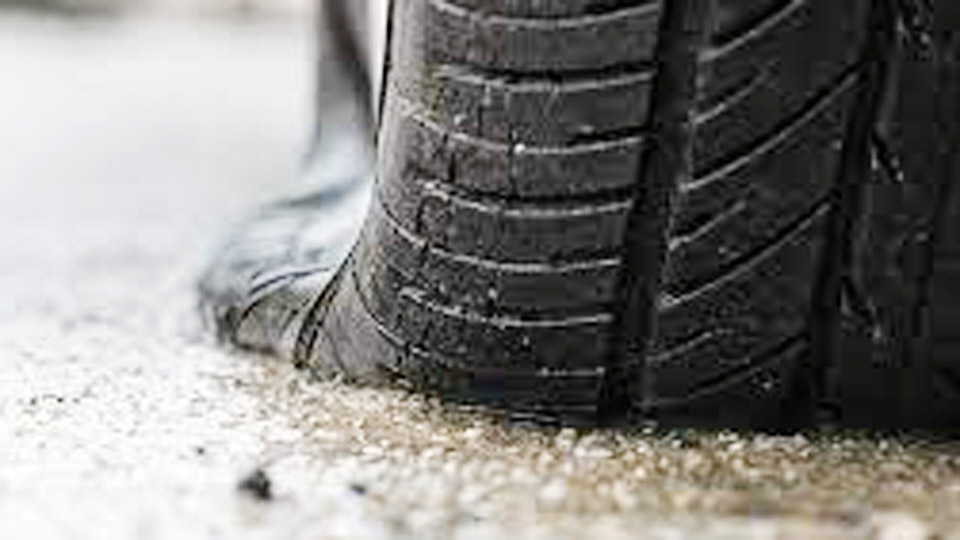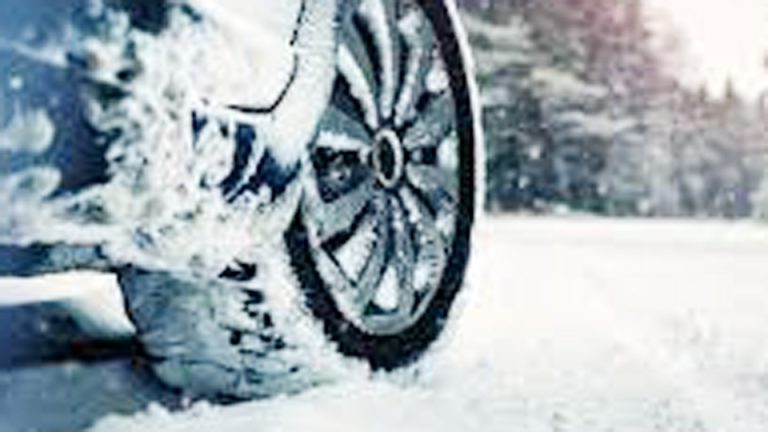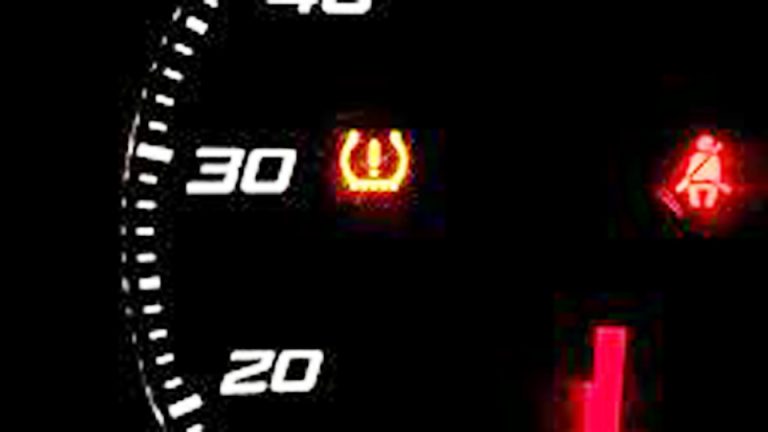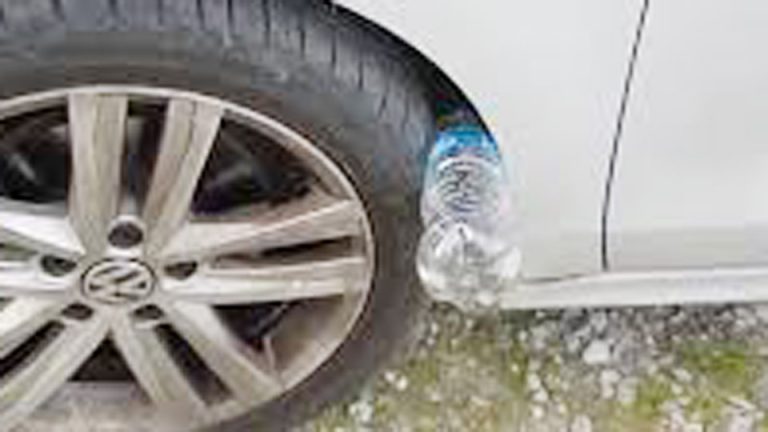I still remember the first winter I noticed my car’s tire pressure light glowing on the dashboard. It was a chilly morning in Michigan, and I was running late for work. I thought, “Why do car tires lose air in the winter? Did I hit a nail or something?” After a quick check at my local mechanic, I learned it wasn’t a puncture but a natural reaction to the cold.
That moment stuck with me, and since then, I’ve made it my mission to understand tire pressure and help friends like you avoid the same confusion. Let’s dive into why this happens and how you can keep your tires ready for winter’s bite.

Image by synchrony
What Causes Tires to Lose Air in Cold Weather?
Winter’s chill does more than make you shiver—it affects your car’s tires too. The main culprit is a basic law of physics: as temperatures drop, the air inside your tires contracts. This isn’t something I read in a textbook; I’ve seen it firsthand. Last December, my sedan’s tire pressure dropped by nearly 5 PSI overnight during a cold snap. Here’s why this happens and what you need to know.
Temperature and Air Pressure: The Science Made Simple
Air molecules move less when it’s cold, causing the air inside your tires to take up less space. For every 10°F drop in temperature, tire pressure can decrease by about 1-2 PSI. In places like Minnesota or New York, where winter temps can plummet from 50°F to 20°F, that’s a noticeable loss. I learned this the hard way when I ignored my tire light for a week, only to feel my car handling sluggishly on icy roads.
Why Do Car Tires Lose Air in the Winter?
Other Winter Factors at Play
Cold air isn’t the only reason tires lose pressure. Snow, ice, and road salt can stress your tires, sometimes causing tiny cracks or leaks around the valve stem. I once found a slow leak in my truck’s tire after driving through a salty slush pile.
The corrosion had weakened the valve stem seal, letting air escape bit by bit. Seasonal changes can also reveal existing issues, like worn tire treads or small punctures, that you might not notice in warmer months.
How Does Low Tire Pressure Affect Your Driving?
Low tire pressure isn’t just a dashboard annoyance—it can make winter driving risky. I’ve felt the difference myself. A couple of winters ago, I drove with underinflated tires and noticed my car swerving slightly on a snowy curve. It was a wake-up call. Here’s what happens when your tires are low on air.
Safety Risks on Winter Roads
Underinflated tires have less grip, which is dangerous on slick surfaces. Your car might take longer to stop or struggle to corner properly. I’ve skidded a bit on icy patches when my tires weren’t properly inflated, and it’s not a feeling I’d wish on anyone. Low pressure also increases the chance of a blowout, especially if you hit a pothole hidden under snow.
Impact on Fuel Efficiency and Tire Wear
Low pressure forces your engine to work harder, burning more gas. I noticed my SUV’s fuel economy drop by about 2 MPG one winter when I didn’t check my tires regularly. It also causes uneven tire wear, as the sidewalls flex more than they should. Replacing tires early because of neglect? That’s a pricey mistake I’ve avoided since learning better.
How to Check Your Tire Pressure Like a Pro
Checking your tire pressure is easier than you might think, and it’s something I do monthly in winter. You don’t need to be a mechanic to get it right. Here’s how I handle it, step by step, to keep my tires in top shape.
Get the Right Tools
You’ll need a reliable tire pressure gauge. I use a digital one—it’s easy to read and costs about $15 at any auto store. A portable air compressor is handy too, especially if you’re filling tires at home. I keep one in my garage for quick top-ups.
Check Pressure When Tires Are Cold
Always check your tire pressure before driving, when the tires are “cold.” Driving heats the air inside, giving you a false reading. I park my car overnight, then check in the morning. Your car’s recommended PSI is usually on a sticker inside the driver’s door or in the owner’s manual. For my sedan, it’s 35 PSI, but yours might differ.
Fill Tires Properly
If the pressure’s low, add air until you hit the recommended PSI. Don’t overinflate—too much air can make your ride bumpy and wear out the center of your tires. I made that mistake once and felt every pebble on the road! Use a compressor at a gas station or your own, and check the pressure again after filling.
Tips to Prevent Tire Pressure Loss in Winter
Preventing air loss is better than constantly topping off your tires. Over the years, I’ve picked up a few habits that keep my tires ready for winter’s worst. Here’s what works for me.
Regular Inspections Are Key
I check my tire pressure every two weeks in winter, especially after big temperature swings. It takes five minutes and saves me from bigger headaches. Look for visible damage too, like cuts or bulges, and clean off any salt buildup around the valve stems.
Invest in Quality Tires
Not all tires are created equal. I switched to winter-specific tires a few years back, and they hold pressure better in cold weather. They’re designed with compounds that stay flexible in low temperatures, reducing the risk of leaks. If you’re in a snowy state, it’s worth the investment.
Use Nitrogen Instead of Regular Air
Some shops offer nitrogen tire fills, which I’ve tried on my SUV. Nitrogen molecules are larger than oxygen, so they leak more slowly. It’s not a must, but I’ve noticed my tires hold pressure longer—sometimes a month without needing a top-up. The downside? It costs more, about $5-$10 per tire.
Keep Valve Caps Tight
Those little plastic caps on your valve stems aren’t just decorative—they keep dirt and moisture out. I lost one once, and the valve got clogged with road grime, causing a slow leak. Now I make sure they’re always screwed on tight.
What to Do If You Spot a Leak
Sometimes, low pressure isn’t just cold weather—it’s a real leak. I’ve dealt with this a few times, and it’s not as scary as it sounds if you know what to do.
Spot the Signs
A tire that loses air faster than the others is a red flag. I had one tire drop 10 PSI in a week while the others stayed stable. Check for punctures by spraying soapy water on the tire—if you see bubbles, you’ve found the leak. Valve stems and bead seals are common culprits too.
Temporary Fixes for Emergencies
If you’re stuck with a slow leak, a can of tire sealant can get you to a shop. I keep one in my trunk for peace of mind. It’s not a permanent fix, though—get to a mechanic as soon as you can. I learned this after limping along on sealant for too long, only to need a full tire replacement.
When to See a Professional
If you can’t find the leak or it’s a big one, don’t wait. I took my car to a shop after noticing a nail in the tread, and they patched it for $20. It was way cheaper than buying a new tire. Regular mechanics can handle most tire issues, but for complex damage, a tire specialist might be your best bet.
Winter Tire Maintenance Checklist
To make things easier, I’ve put together a quick checklist based on what I do every winter. It’s saved me time and kept my tires in great shape.
| Task | Why It Matters | How Often |
|---|---|---|
| Check tire pressure | Prevents safety risks and uneven wear | Every 2 weeks |
| Inspect for damage | Catches punctures or cracks early | Monthly |
| Clean valve stems | Prevents leaks from salt or grime buildup | Monthly |
| Rotate tires | Ensures even wear for longer tire life | Every 6,000 miles |
| Check tread depth | Ensures good traction on snow and ice | Before winter starts |
This checklist isn’t just something I threw together—it’s what I follow to avoid surprises on the road. A penny test works for tread depth: if you can see Lincoln’s head when you stick a penny in the tread, it’s time for new tires.
Common Myths About Tire Pressure in Winter
I’ve heard all sorts of myths from friends about why tires lose air in winter. Let’s clear up a few I’ve come across.
Myth: Low Pressure Only Happens with Old Tires
Not true. Even brand-new tires lose pressure in cold weather because of air contraction. My new set of all-season tires still dropped a few PSI last winter. Age can make leaks worse, but cold affects every tire.
Myth: You Should Inflate Tires Higher in Winter
Overinflating to “compensate” for cold weather is a bad idea. It can make your tires stiff and reduce traction. I tried this once and felt my car bounce like I was on a pogo stick. Stick to the recommended PSI.
Myth: A Tire Light Means a Flat Tire
That dashboard light doesn’t always mean a flat. It often just means your pressure is low—sometimes by just a few PSI. Check with a gauge before panicking. I’ve had that light pop on plenty of times, and a quick fill-up fixed it.
Why Winter Tires Might Be Your Best Bet
If you live where winters are harsh, switching to winter tires could be a game-changer. I made the switch three years ago, and it’s like night and day. Winter tires aren’t just about snow—they handle cold pavement better and maintain pressure more consistently. They’re pricier, sure, but the improved grip and peace of mind are worth it. I haven’t skidded on ice since switching, even during a brutal Wisconsin storm.
Take Control of Your Tires This Winter
Winter’s tough on tires, but it doesn’t have to be a hassle. From my own trial and error, I’ve learned that understanding why car tires lose air in the winter—mostly due to cold air contraction—helps you stay ahead of the problem.
Regular checks, proper inflation, and a little TLC can keep your tires safe and your drives smooth. Don’t let a blinking tire light catch you off guard like it did me that cold Michigan morning.
Frequently Asked Questions
What causes my car’s tires to lose air when it gets cold?
Cold temperatures make the air inside your tires contract, reducing pressure. For every 10°F drop, you might lose 1-2 PSI. Other factors, like small leaks or valve stem damage from road salt, can also contribute.
How often should I check my tire pressure in winter?
I check mine every two weeks, especially after big temperature drops. It’s a quick habit that catches issues early and keeps your tires performing well on snowy roads.
Can I just ignore the tire pressure light if it comes on?
Don’t ignore it! The light means your tires are likely low, which can affect safety and fuel efficiency. Check the pressure with a gauge and fill to the recommended PSI.
Are winter tires worth it for cold weather driving?
Absolutely, if you face harsh winters. I switched to winter tires and noticed better grip and more stable pressure. They’re designed for cold and snow, making them a smart choice for safety.
Does using nitrogen in tires really help in winter?
Nitrogen can reduce pressure loss since it leaks slower than regular air. I’ve used it and found my tires stayed inflated longer, but it’s not essential—regular air works fine with consistent checks.




